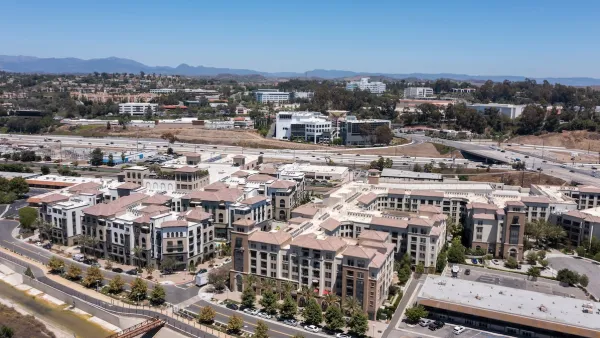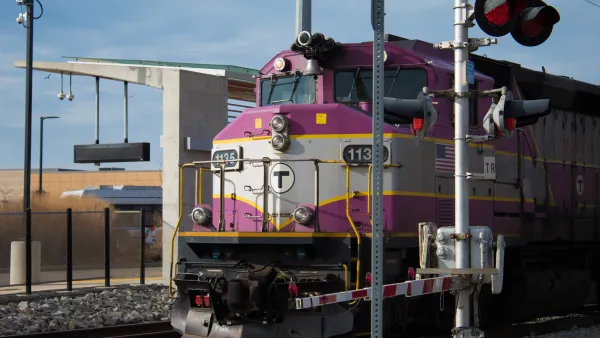Transit-oriented developments multiplied and held their values comparatively well in the housing crisis. In this article, Josh Stephens explores whether the trend will continue post-recession, or if sprawl is poised for a comeback.
"By the middle of 2008 it had become apparent that a trend which had dominated American life for the better part of the past century was coming to a close. What began with Lewis and Clark, covered wagons, and the conquest of the Frontier appeared to be ending in an inglorious mess of bad mortgages, credit default swaps, and zombie houses more prone to causing nightmares than to fulfilling the American dream.
...For all the suffering that has come with it, this chaos has helped spur the development of more urban sites, particularly near mass transit stations. Some Pollyannas have even gone so far as to proclaim the death, or at least the withering, of sprawl.
...'The pockets of neighborhoods that seem to have weathered this economic trauma we’ve had, particularly in the housing market, have been these great little accessible neighborhoods near transit stations, particularly in central cities or inner-ring neighborhoods,' said Robert Cervero, Professor of City and Regional Planning at the University of California, Berkeley.
...In total, the National TOD Database (toddata.cnt.org) estimates that over 1,500 stations are in the development pipeline in 54 cities. And while these projects have served to shuttle commuters, they also can instigate profound changes in cities’ urban fabrics. If designed and developed well, many of them could become new, distinct communities: microcosms of what some planners say a city should be.
'We’re seeing a heightened desirability after the real estate crash,' said Geoff Anderson, president of Reconnecting America. 'The markets are really reflecting the demand that’s out there where the places around transit are walkable and closer to centers.'
...Proponents of TOD are hoping that, before long, it becomes so commonplace that it is no longer seen as a typology apart and instead becomes the norm anywhere public transit can support higher residential densities and supporting commercial uses.
FULL STORY: USA TOD-ay

Analysis: Cybertruck Fatality Rate Far Exceeds That of Ford Pinto
The Tesla Cybertruck was recalled seven times last year.

National Parks Layoffs Will Cause Communities to Lose Billions
Thousands of essential park workers were laid off this week, just before the busy spring break season.

Retro-silient?: America’s First “Eco-burb,” The Woodlands Turns 50
A master-planned community north of Houston offers lessons on green infrastructure and resilient design, but falls short of its founder’s lofty affordability and walkability goals.

Test News Post 1
This is a summary

Analysis: Cybertruck Fatality Rate Far Exceeds That of Ford Pinto
The Tesla Cybertruck was recalled seven times last year.

Test News Headline 46
Test for the image on the front page.
Urban Design for Planners 1: Software Tools
This six-course series explores essential urban design concepts using open source software and equips planners with the tools they need to participate fully in the urban design process.
Planning for Universal Design
Learn the tools for implementing Universal Design in planning regulations.
EMC Planning Group, Inc.
Planetizen
Planetizen
Mpact (formerly Rail~Volution)
Great Falls Development Authority, Inc.
HUDs Office of Policy Development and Research
NYU Wagner Graduate School of Public Service




























